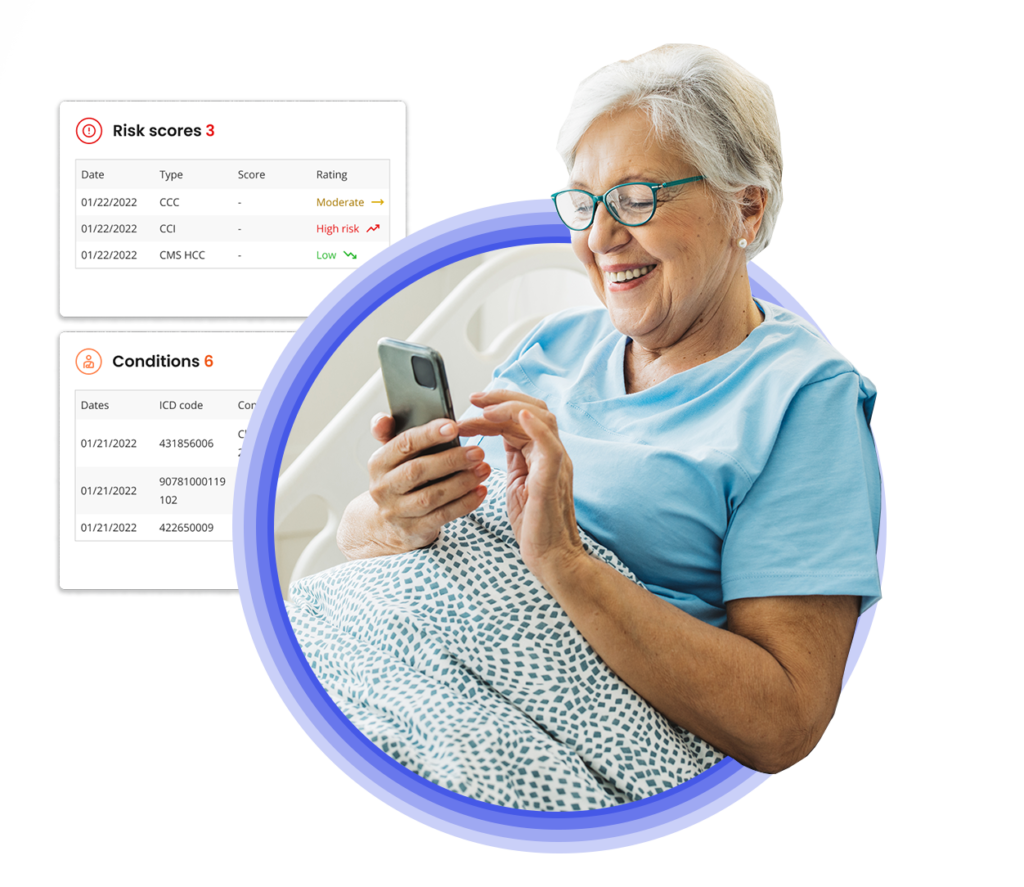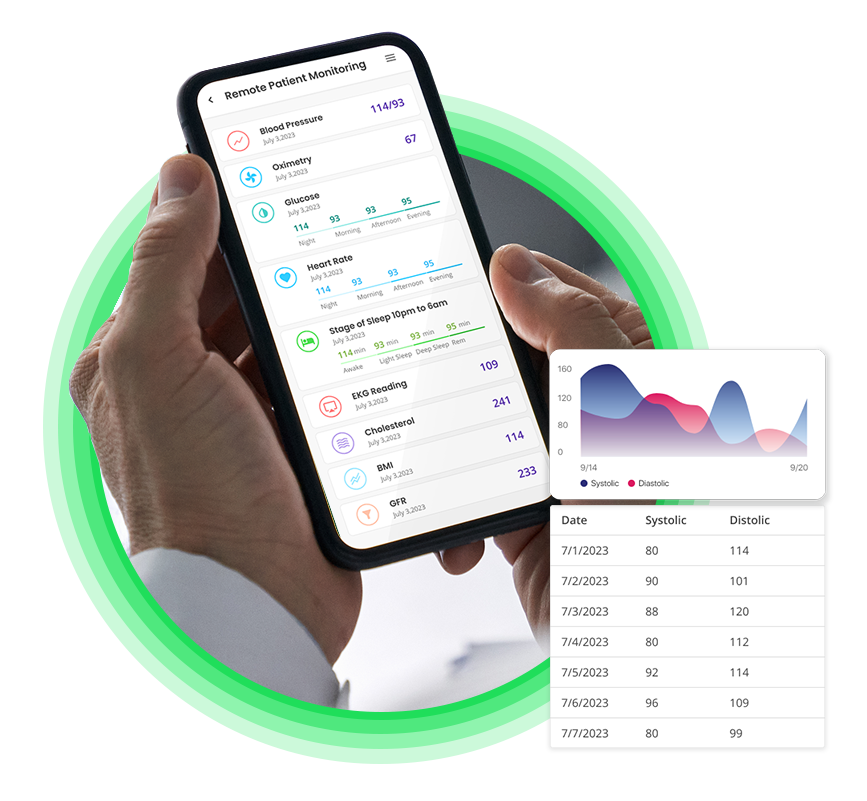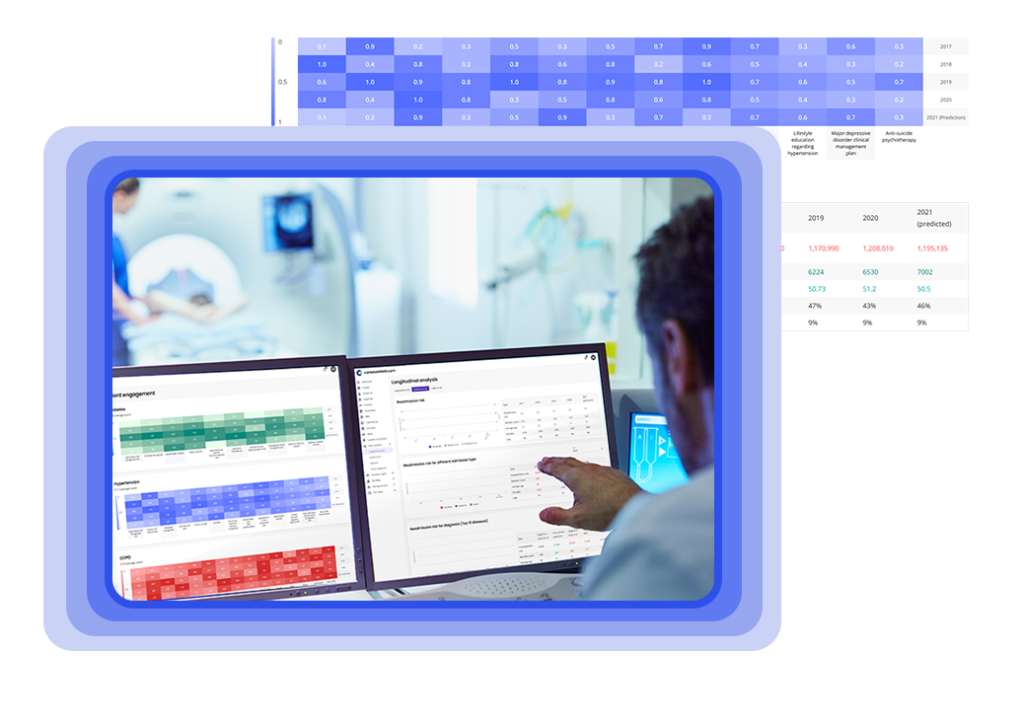
Value-Based Care
As healthcare shifts from a fee-for-service model to value-based care (VBC), healthcare providers, payers, and organizations are challenged to improve patient outcomes while reducing costs. Value-based care emphasizes quality over quantity, incentivizing healthcare providers to deliver better care by focusing on patient outcomes and overall well-being. CareInsight’s AI-driven solutions, health3d.ai™ and careassistant.ai™, empower healthcare teams to navigate this transformation, driving efficiency, reducing costs, and improving the quality of care.
Key Challenges in Value-Based Care

Data Integration
Holistic patient views enable personalized care and better decision-making.

Quality Metrics
Many organizations have vast data but lack tools to analyze and act on it in real time.

Care Coordination
Personalizing care plans manually for chronic patients is time-consuming and error-prone.

Risk-Based Contracting
Patients often fail to follow their care plans, leading to worse outcomes and readmissions.

Patient Engagement and Compliance
Managing chronic conditions can be resource-heavy, increasing costs without better results.

Healthcare Cost Reduction
Chronic patients need ongoing engagement, but many platforms don’t support consistent interaction.
How CareInsight Supports Value-Based Care
CareInsight provides comprehensive tools to help healthcare teams succeed in value-based care environments, focusing on data integration, care coordination, patient engagement, and cost control


How CareInsight Supports Value-Based Care
CareInsight provides comprehensive tools to help healthcare teams succeed in value-based care environments, focusing on data integration, care coordination, patient engagement, and cost control

Integrated Data for Holistic Patient Views
Value-based care requires a comprehensive understanding of each patient’s health journey. health3d.ai™ aggregates data from various sources, providing a longitudinal view of a patient’s medical history. By combining clinical, genetic, social, and behavioral data, our platform offers healthcare providers a complete picture of each patient, supporting better decision-making and more personalized care plans.
Monitoring and Reporting on Quality Metrics
Tracking quality metrics like HEDIS scores, readmission rates, and patient outcomes is essential in value-based care. careassistant.ai™ automates the tracking of these metrics, offering real-time reports that allow healthcare teams to monitor performance, identify areas for improvement, and adjust care strategies to meet value-based care goals.


Monitoring and Reporting on Quality Metrics
Tracking quality metrics like HEDIS scores, readmission rates, and patient outcomes is essential in value-based care. careassistant.ai™ automates the tracking of these metrics, offering real-time reports that allow healthcare teams to monitor performance, identify areas for improvement, and adjust care strategies to meet value-based care goals.

Seamless Care Coordination
Effective value-based care relies on seamless coordination between care teams. careassistant.ai™ ensures that providers, care managers, and patients are all aligned through AI-powered workflows that streamline communication. This reduces care fragmentation, minimizes errors, and ensures that patients receive consistent, high-quality care across all touchpoints.
Financial Risk Management with Predictive Insights
Value-based care requires healthcare providers to manage financial risk while ensuring high standards of care. health3d.ai™ uses predictive analytics to identify at-risk patients, enabling early interventions that reduce costly emergency care and hospitalizations. By proactively managing patient risks, healthcare providers can meet quality metrics while controlling costs.


Financial Risk Management with Predictive Insights
Value-based care requires healthcare providers to manage financial risk while ensuring high standards of care. health3d.ai™ uses predictive analytics to identify at-risk patients, enabling early interventions that reduce costly emergency care and hospitalizations. By proactively managing patient risks, healthcare providers can meet quality metrics while controlling costs.

Engaging Patients in Their Care
Patient engagement is a cornerstone of value-based care. carewallet.ai™ ensures that patients remain active participants in their care plans by providing them with real-time access to health data, personalized reminders, and telehealth capabilities. This proactive engagement reduces hospital readmissions and improves compliance with treatment plans, leading to better health outcomes.
Cost Efficiency Through Data-Driven Decisions
Value-based care incentivizes cost control without sacrificing care quality. health3d.ai™ and careassistant.ai™ enable healthcare providers to make data-driven decisions that optimize care pathways, reduce unnecessary treatments, and streamline workflows. By targeting interventions to the right patients at the right time, providers can reduce overall healthcare costs while improving patient outcomes.


Cost Efficiency Through Data-Driven Decisions
Value-based care incentivizes cost control without sacrificing care quality. health3d.ai™ and careassistant.ai™ enable healthcare providers to make data-driven decisions that optimize care pathways, reduce unnecessary treatments, and streamline workflows. By targeting interventions to the right patients at the right time, providers can reduce overall healthcare costs while improving patient outcomes.
Benefits of CareInsight for Value-Based Care

Data Integration and Analytics
Without continuous tracking, providers may not catch worsening symptoms early enough.

Automated Quality Metrics Tracking
Enable real-time monitoring of key metrics, including HEDIS and readmission rates.

Streamlined Care Coordination
Seamless communication between providers, care managers, and patients ensures quality care delivery.

Risk Management
Predictive analytics identify at-risk patients for early intervention, improving outcomes while reducing costs.

Patient Engagement
Patients remain informed and involved in their care through personalized tools and telehealth options.

Cost Control
Chronic patients need ongoing engagement, but many platforms don’t support consistent interaction.
Proactive value based care


